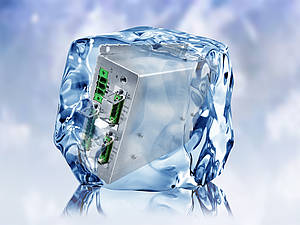
DC / DC converter specialist intreXis has designed a family of converters, which operates over a temperature range from -50°C to+85°C without any restrictions, and is compliant with EN50155.
The railway-standard EN50155 distinguishes the temperature classes T1 (-25°C to +70°C), T2 (-40°C to +70°C), T3 (-25°C to +85°C) and TX (-40°C to +85°C).
However, in many regions of the world it can get colder than -40°C. For instance in Russia, temperatures down to -50°C are expected. intreXis has invested a lot in research for the proper functioning of the power supplies, and hence the whole locomotive, at these extreme temperatures:
There are many challenges to operate a DC-DC converter at -50°C without any restrictions. Most manufacturers of electronic components for power supplies specify their function only down to -40°C.
The market offers components which are specified for an operating temperature down to -50°C, but these components are substantially more costly and their availability is very limited. Moreover, the use -50°C components does not solve the problems which are inherent to component characteristics.
For instance the equivalent series resistance (ESR) of electrolytic capacitors rises dramatically at very low temperatures. NTCs, which are often used for the inrush-current limitation, have very high impedance at extremely low temperatures.
The gate-source threshold of FETs rises significantly at low temperatures. The engineers at intreXis have overcome and mastered all these challenges with success.
